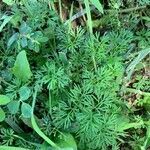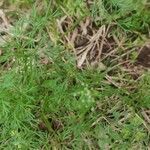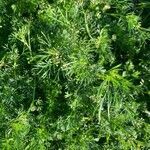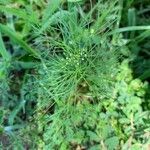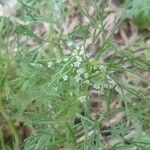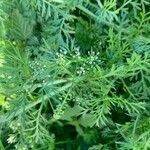Glabrous, annual herb, 0.2-1.2 m high. Leaves 3-or 4-pinnate, with many filiform segments. Flowers in compound umbels, sessile to pedunculate; involucels absent. Calyx teeth obsolete. Petals white or pale pink. Styles very short. Flowering time Oct.-June. Fruit broadly ellipsoid to almost round, slightly laterally compressed, 1.251.75 mm long; mericarps each with 5 strongly protuberant, broad, pale longitudinal ribs; vittae minute, in furrows and 2 on face.
Annual herb. Flowering stems up to 0.6 m high; erect. Leaves radical and cauline, compound; blade 3-or 4-pinnate, divided into many linear-filiform segments. Flowers: involucral bracts 0; white; Jun.-Jan.

